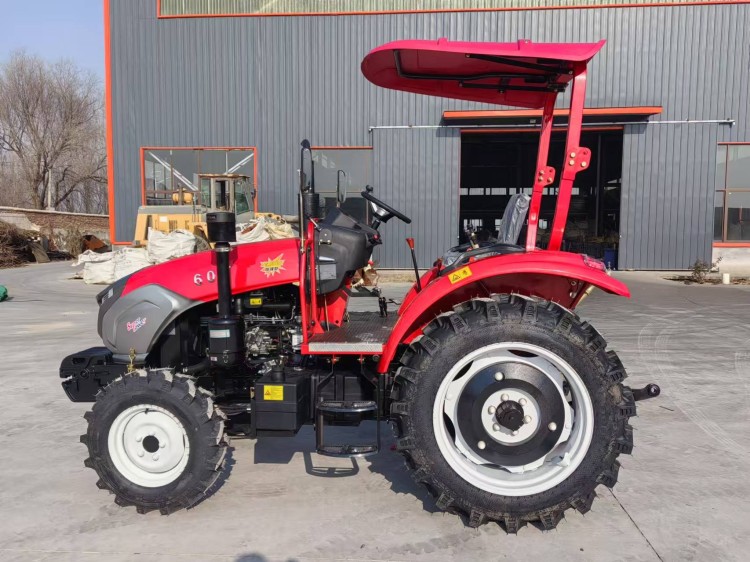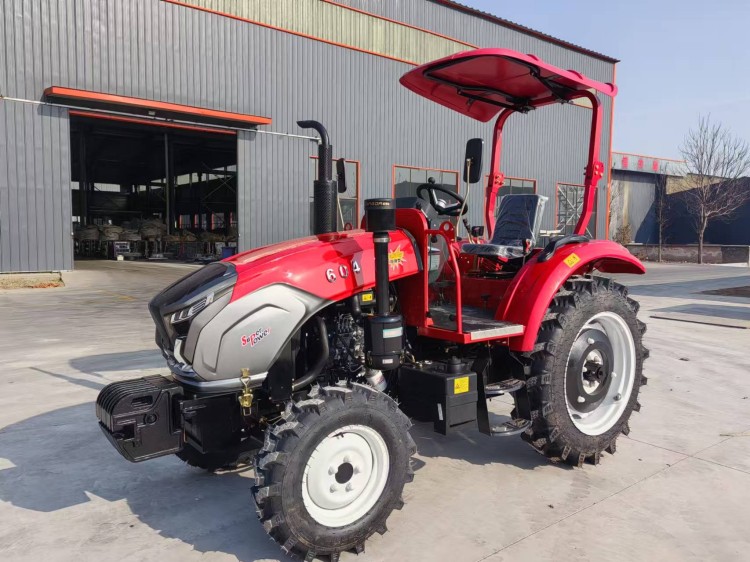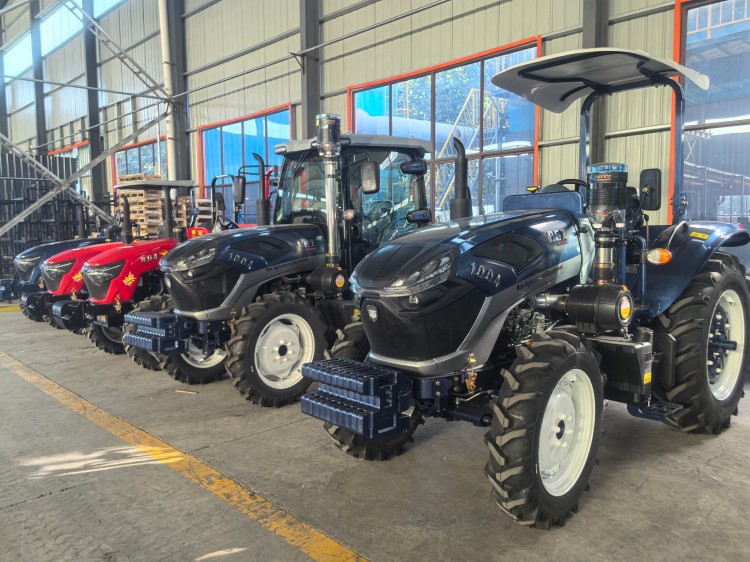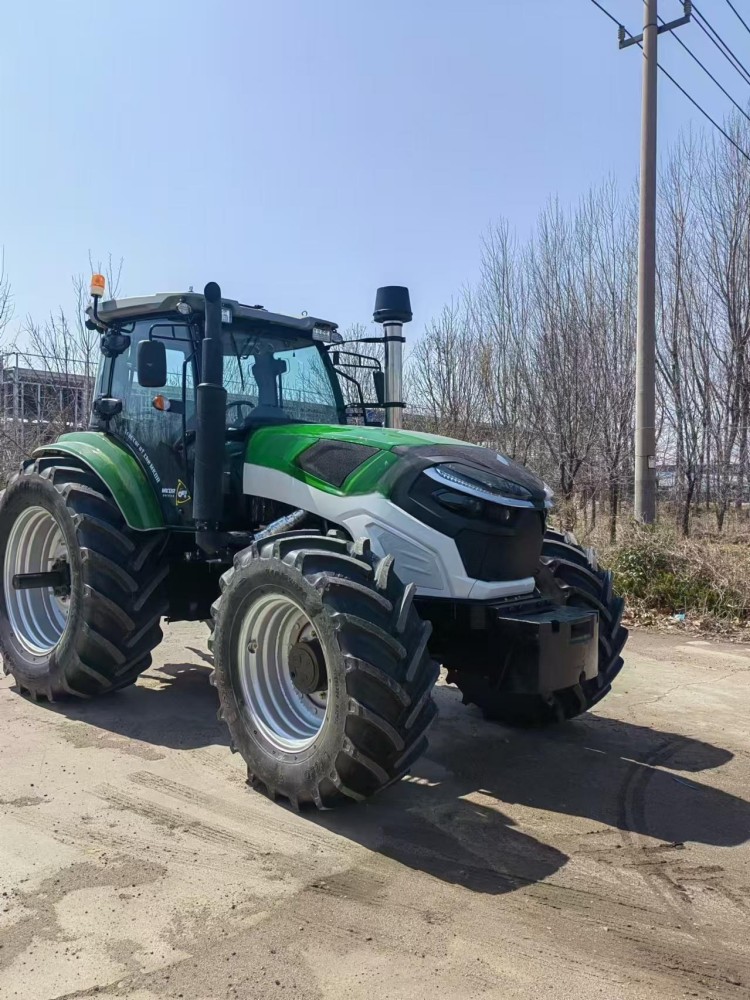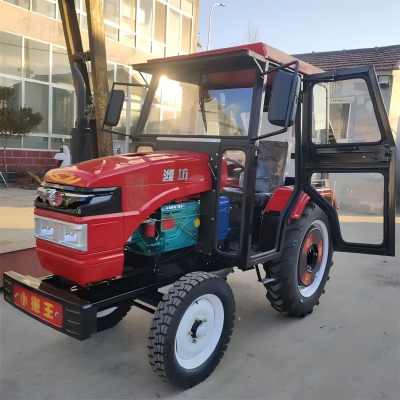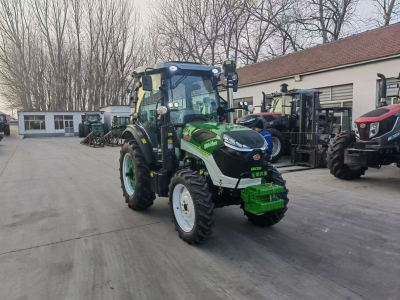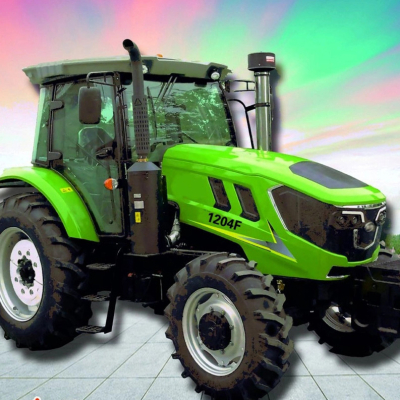Risk control when selling agricultural machinery on credit
The sale of agricultural machinery on credit as a means of promoting productive consumption in agriculture is recognized by the market and welcomed by buyers and has positive implications. Therefore we cannot choke because of the risk of its existence. A useful exploration of this, a bold attempt, will be a win-win situation.
What is agricultural machinery on credit
Selling agricultural machinery on credit is an ancient trade practice. It originated from the commercial habits of ancient society and has become more widely used in modern society. This sales model allows the buyer to pay for the purchase of a product (in this case, farm equipment) at some point in the future, rather than immediately.
1.Historical context of selling agricultural machinery on credit
Selling on credit has been a form of turnover trading since time immemorial, the basis of which was the credit of the seller and the seller. In ancient society, with the development of commodity economy, "credit" gradually became a commercial habit. For example, in the Song Dynasty, merchants typically sold goods within a year after receiving payment. In modern society, credit is more common in two forms: consumer credit and commercial credit between businesses.
2. The reality of selling agricultural machinery on credit
Agricultural machinery sales are seasonal, with the continuous progress of science and technology, intelligence and automation will become an important development direction of the agricultural machinery sales industry. Increasing government environmental requirements will encourage enterprises to intensify research and development and application of environmentally friendly technologies, and promote the development of environmentally friendly and low-carbon agricultural machinery products. The spread of the Internet and e-commerce will lead to the emergence of new business models and sales channels for agricultural machinery.
Risk of selling agricultural machinery on credit
The credit sales model for farm equipment can lead to difficulties in collecting receivables and impact the cash flow of the business. Market competition risks, political risks and adjustments in government policies on agricultural mechanization may affect the direction of development and market demand in the agricultural machinery sales sector.
Thus, the sale of agricultural machinery on credit, as a traditional trade practice, still plays an important role in the sale of modern agricultural machinery. However, with changes in the market and increased competition, lending also poses associated risks. Therefore, agricultural equipment dealers need to fully consider various factors and develop appropriate risk management measures when adopting a lending strategy.
There are various forms of lending for agricultural machinery
Short term loan
This form is usually applied to more seasonal agricultural activities. A short-term loan is a form of credit selling in which the seller agrees with the buyer to pay for the goods in the coming months, usually after the harvest. This practice is especially common in agricultural production as it helps farmers obtain needed farm machinery and other equipment during periods of financial hardship.
Farmers often face shortages of inputs in agricultural production, especially during the initial stages of crop production and cultivation. Short-term credit is a solution that allows farmers to purchase agricultural machinery and equipment without immediate financing, thereby increasing productivity and productivity. This practice is especially applicable to seasonal agricultural production, as farmers can use sales proceeds to pay off their loans after harvest.
Selling agricultural equipment on credit can help farmers improve the efficiency and productivity of agricultural production. For example, the use of highly efficient rotators allows large amounts of plowing to be completed in a short period of time, saving time and labor costs. Agricultural machinery purchased on credit not only increases the efficiency of agricultural production, but also reduces the labor intensity of farmers. This means farmers can spend less energy doing more work and therefore more time on other life activities.
Lending stimulates the use of agricultural machinery and the introduction of modern agricultural production technologies, which helps to optimize the structure of the labor force and increase sources of income for farmers. In addition, the funds obtained from the loan can be used for other investments that will contribute to the all-round development of the rural economy.
Short-term credit as a financial instrument plays an important role in agricultural production. This not only helped farmers overcome the lack of funds, but also promoted mechanization and modernization of agriculture, which in turn improved the efficiency of agricultural production and the standard of living of farmers. However, appropriate risk management measures are also necessary to ensure smooth transactions and effective risk control.
2 Long-term loan
This form typically includes more expensive farm equipment that may have a repayment period of up to several years. The buyer must pay a certain amount monthly or quarterly until paid in full. A long-term loan usually requires a guarantee or collateral from the buyer. A long-term loan is a special form of credit. Under this model, the buyer pays the full price of the goods not in a lump sum, but monthly or quarterly according to a pre-agreed schedule until the purchase price is paid in full. This method of selling provides financial convenience to buyers, allowing them to also purchase needed goods or services when they are short of funds.
A long-term loan, while providing relief to buyers and sellers, does come with certain risks. For the seller, selling on credit increases the risk of bad debt because the buyer may not pay the purchase price on time. To control this risk, the seller usually asks the buyer to provide a guarantee or deposit to provide indemnity in the event that the purchase price cannot be recovered.
When entering into long-term credit transactions, both the purchaser and buyer must comply with relevant laws and regulations to ensure the legality of the transaction. At the same time, in order to protect its rights and interests, the seller must enter into a detailed agreement or sales contract with the buyer, which specifies the rights and obligations of both parties, the repayment period, liability for breach of contract, etc. In addition, the contract should include dispute settlement provisions so that if a dispute arises, the matter can be resolved through legal means.
Long-term credit as a financing instrument provides buyers with financial opportunities to purchase more expensive goods. At the same time, the seller can thus also expand sales and increase profits. However, this method of sale also involves certain risks, which require that the seller and buyer fully understand and assess the risks before entering into the transaction, take the necessary measures to control the risks and, if necessary, seek legal advice.
3. Installment payments
This is a common form of loan in which the buyer does not have to pay the entire amount in one lump sum when purchasing farm equipment, but instead pays it off over time according to an agreed upon payment plan. This makes it easier for farmers to access expensive agricultural machinery and equipment. This payment method is often used in certain transactions involving long lead times and high value products, such as the purchase of agricultural machinery and equipment.
Installment payments can effectively ease the financial pressure on buyers. Farmers can easily afford expensive farm machinery and equipment in installments, avoiding the economic pressure of paying large sums of money at one time. The buyer can negotiate an installment payment plan with the seller depending on their financial situation, usually with several small payments until they are paid in full. An installment plan usually has additional interest costs because it is a form of credit and the bank or financial institution charges the corresponding interest. For merchants, the method of providing installment plans can stimulate consumer desire to buy and increase sales.
When selling on credit, you should choose a reputable financial institution or business to handle the installment payment to ensure the security of your funds and personal information. The buyer must fulfill his promise and repay the debt on time. Make sure to pay back the money on time and at the agreed time, otherwise it will affect your personal credit history. Some financial institutions impose penalties or other restrictions on early repayment, so you need to know the rules in advance.
To summarize, installment loans, as a common form of credit, can really help farmers make expensive farm machinery and equipment more affordable. But when choosing an installment plan, it is also necessary to take into account potential risks and financial planning.
4 Credit loan
Leveraging is a sales model based on the buyer's credit history and credit score. Under this model, the seller decides whether to extend credit and the size and duration of the loan based on the buyer's creditworthiness.
A credit sale, also known as a credit sale, is a form of credit-based sales. Specifically, when a seller enters into a purchase and sale agreement with a buyer, the seller offers the buyer to pick up the goods while the buyer pays or pays for the goods within the specified time frame in accordance with the agreement.
The peculiarity of a loan is that it is based on credit. The loan is based on the buyer's credit history and credit rating. The seller evaluates the buyer's creditworthiness to decide whether to extend credit, as well as the size and duration of the loan. Unlike traditional loans or borrowings, a credit loan typically does not require the buyer to provide collateral or a guarantee. This is because the seller trusts the buyer's credit history and credit ratings, considering them sufficient to prove that the buyer can pay for the goods on time.
While lending makes it easier for buyers, it also comes with risks. For sellers, the buyer's failure to repay the purchase price on time may result in loss of funds and bad debt. A credit loan is associated with the following risks:
Firstly, financial costs. During the credit sale period, if the purchase fee cannot be reimbursed on time, sellers must bear financial costs, which may put financial pressure on enterprises. Secondly, management costs. To recover the purchase price, the supplier must pay additional costs, including travel, attorney's fees, court costs, etc. Thirdly, opportunity costs. Keeping money occupied by clients means that businesses lose the opportunity to invest those funds in other profitable projects. Fourth, the cost of credit deficit. The company was unable to receive losses associated with the maximum sales volume, i.e. with the costs associated with the reduction in sales caused by lending. Fifth, the cost of bad debt. For various reasons, the value of goods sold on credit often cannot be recovered, leading to an increase in bad debt.
To control the risks associated with lending, sellers need to take a number of measures: first, select a client. Companies should choose clients with good credit to trade with. This requires researching and assessing the creditworthiness of clients. Secondly, determine the terms of the loan. During negotiations with the client, the terms of the loan will be determined, including the form, term and amount of the loan. Third, develop guarantees. Risk mitigation measures taken by a business during the credit sale process include agreeing on collateral, collateral terms, etc. in the supply contract. Fourthly, collection of money. The sales department must monitor the resulting accounts receivable to ensure timely collection of the purchase price. Fifthly, debt collection. In case of bad or bad debts, the business must face the challenge of collection.
Thus, leveraged credit is a sales model based on the creditworthiness of the buyer. This makes it easier for buyers, but also creates risks. To control these risks, sellers need to take a number of measures to ensure timely reimbursement of the purchase price.
A typical case of selling agricultural machinery on credit
Example 1: Refusal of dealers to subsidize agricultural machinery for farmers
In some places, farm equipment dealers deduct subsidies due to farmers for purchasing machines. According to "Exposing the Agricultural Machinery Subsidy Chaos: Harbin Binxiang County Dealers Hire People to Buy Fraudulent Machinery Subsidies", it is reported that some dealers in Harbin Binxiang County are looking for multiple names, fictitious machine purchase facts are defrauding government subsidies. These dealers promised farmers a certain fee for benefits and then fraudulently used the farmers' IDs and bank cards to obtain government subsidies. Such actions harm not only the interests of farmers, but also the government's subsidy policies.
According to the investigation, some agricultural machinery dealers in Binxiang County, Harbin, in order to defraud government subsidies, adopted a way to find someone to buy the machine under the name. Dealers arrange in advance for farmers to prepare ID cards, bank cards, photographs of farm equipment and other materials, and promise each household 500 yuan for the benefits. After farmers cooperate in completing signing, photographing, bank card processing and other formalities, the subsidy will be credited to the farmer's account, but then this money will be returned by the farm equipment dealer.
For example, Liu Baolin from Binzhou Village, Binxiang County, bought five tractors in the name of Zhang Zhiyong's father-in-law, a dealer, but in fact he only bought one. Liu Baolin and his family cooperated in completing the procedures of signing, photographing and issuing bank cards, after which they each received 500 yuan for delay in work, and the subsidy was withdrawn by Zhang Zhiyong's wife.
A similar case is Wang Li from Li Jiadian Village in Pennsylvania Town, Pennsylvania County, where she and other people from the same village were hired by Lao Sun Tau Farming Machinery Store (Yongsheng Farming Machinery Company, Ltd. in Binxiang County) to sign, photograph and opening bank cards. After completion, Wang Li received a heavy fee of 500 yuan, and her bank card and password were seized by the owner of the agricultural machinery store, the subsidy was also returned by the boss.
This withholding of farm machinery subsidies not only harms farmers but also undermines government subsidy policies. The government created subsidies for the purchase of agricultural equipment to support agricultural production and ease the financial burden of farmers, but the actions of these distributors did not result in the subsidized funds actually benefiting farmers. In addition, such actions are suspected of fraud, violation of laws and regulations, and undermining social justice and justice.
Case 2: "Zero Dollar Airplane Sales" Suspected of Fraud
"Zero Dollar Machine Sales" is a scam involving subsidies for agricultural machinery. The business sells farm equipment on credit to the farmer, claiming that the farmer can pay in installments or trade in an old machine for a new one without requiring immediate full payment. However, these enterprises actually include prices for agricultural machinery products in the subsidy, thereby misappropriating government subsidies.
This behavior was recognized by the court as fraud. According to "Zero Dollar Airplane Sales" to impose government subsidies on the criminal's fraud, it is reported that in the ruling of the People's Court of Fengcheng City, Liaoning Province, and the People's Court of Dandong City, Liaoning Province, the relevant enterprises were found guilty of fraud and sentenced to severe punishment for "selling zero-dollar aircraft" to obtain government subsidies.
The event has passed: the distribution company has signed a letter with the farmer promising that the farmer can pay in installments or exchange the old machine for a new one without requiring immediate full payment. The distributor issues invoices at full price, sells agricultural equipment on credit to the farmer and issues invoices at full price to the farmer. Distribution enterprises, without the knowledge of farmers, include the prices of agricultural machinery products in the subsidy, thereby misappropriating government subsidies.
"Zero dollar aircraft sales" suspected of being a scam not only harms national interests, but also affects the legitimate rights and interests of farmers. Therefore, relevant enterprises are subject to strict sanctions by the law, which indicates the strict government control of agricultural machinery subsidy policies and strict fight against fraud.
Case 3: Dispute over the sale of agricultural machinery on credit
In the process of selling agricultural machinery on credit, some farmers failed to repay their debts on time, which led to agricultural machinery companies taking legal action to collect the debt.
Li bought a manual double-bed corn harvester on credit from Jiaohe City Agricultural Machinery Company at a price of 29,000 yuan, and both parties signed a credit purchase agreement and agreed on the repayment date and interest.
Because Li did not return the money on time, the agricultural machinery company filed a lawsuit against Li and his wife Wang. Through the mediation of the court, Li and Wang reached an agreement with the agricultural equipment store, and the debt was repaid three times. Thanks to the judge's follow-up, they finally got the money and interest back and the case was successfully dismissed.
Do a good job of risk management in the sale of agricultural machinery on credit, promote the healthy development of agricultural machinery on credit
Selling agricultural machinery on credit, as a general sales model, plays an important role in the sale of agricultural machinery. However, various risks followed, including subsidy repayment risk, credit risk, market risk and so on. To promote the healthy development of agricultural machinery lending, a number of risk control measures need to be taken.
1. Risk assessment
A thorough risk assessment must be carried out before you start selling on credit. This involves surveying the creditworthiness, willingness and ability of farm households to repay their debts. The assessment helps identify farmers with higher solvency and reliable credit, thereby reducing the risks associated with lending. At present, relevant government parties have established a credit information system for residents, and agricultural machinery credit sales should make full use of this system, select quality credit facilities, help them develop new quality productive forces, and move faster towards a rich life. The authorities responsible for agricultural mechanization should take the initiative to intervene and study the feasibility of this new model of financial support for agriculture so that it can be implemented as soon as possible and benefit the livelihood of the people.
2. Contractual obligations
Contractual restrictions increase farmers' awareness of repayment and reduce the risk of default. The contract must clearly define repayment terms, interest on late payments and other conditions that protect the rights and interests of the parties in the form of law.
3.Implementation of a guarantee mechanism
Farmers are required to provide guarantees or third party guarantors, which increases repayment guarantees. The security may be a mortgage, pledge, or other form of security for the farmer's assets. Thus, even if farmers are unable to repay their debts, losses can be reduced through the guarantee mechanism. Agencies responsible for agricultural mechanization should actively explore third party guarantee mechanisms to facilitate their implementation.
4) Strict supervision and management
Create a reliable loan management system and strengthen control over the repayment of funds by farmers. Communicate with farmers regularly, remind and encourage repayment, identify problems in a timely manner and take appropriate action.
5 Diversification of repayment methods
Various repayment methods are available to farmers such as electronic payments such as cash, bank transfers or Alipay. This will make it easier for farmers to choose a suitable debt repayment method based on real conditions and improve the timeliness and accuracy of repayment.
To summarize, the above risk control measures can effectively reduce the risks of agricultural machinery credit sales and promote the healthy development of agricultural machinery credit. At the same time, joint efforts are needed both within and outside the industry to continuously improve the relevant policy and system for the sale of agricultural machinery on credit and provide farmers with more convenient and reliable financial services.
Author: Hanzhong Woodcutter
Source: Agricultural Machinery Information Network

